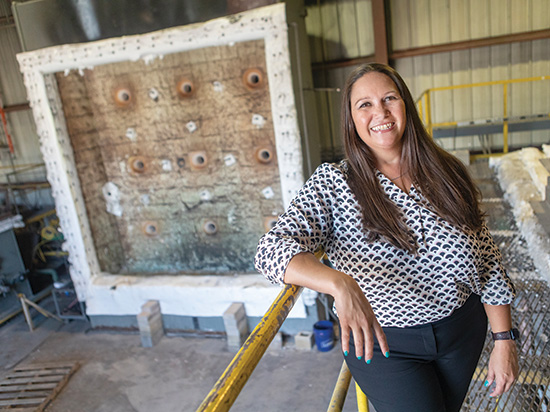Over the last decade, fire deaths have increased by 32 percent following three decades of relative decline. One contributing factor may be the rise in wildfires, which are escalating in both frequency and ferocity. Four of the 10 deadliest wildfires in U.S. history, including the devasting 2023 Lahaina Town fire that killed 98 people on the Hawaiian island of Maui, happened in the last decade while all other fires listed occurred prior to 1933.
Another contributing factor could be the increased use of synthetic materials, which burn hotter and produce more toxic gases than fires from natural materials such as wood, leather, cotton and wool. Today’s open-concept floor plans allow fire to spread more readily and are more dangerous from a fire-safety standpoint when compared with the compartmentalized homes built prior to the 1950s.
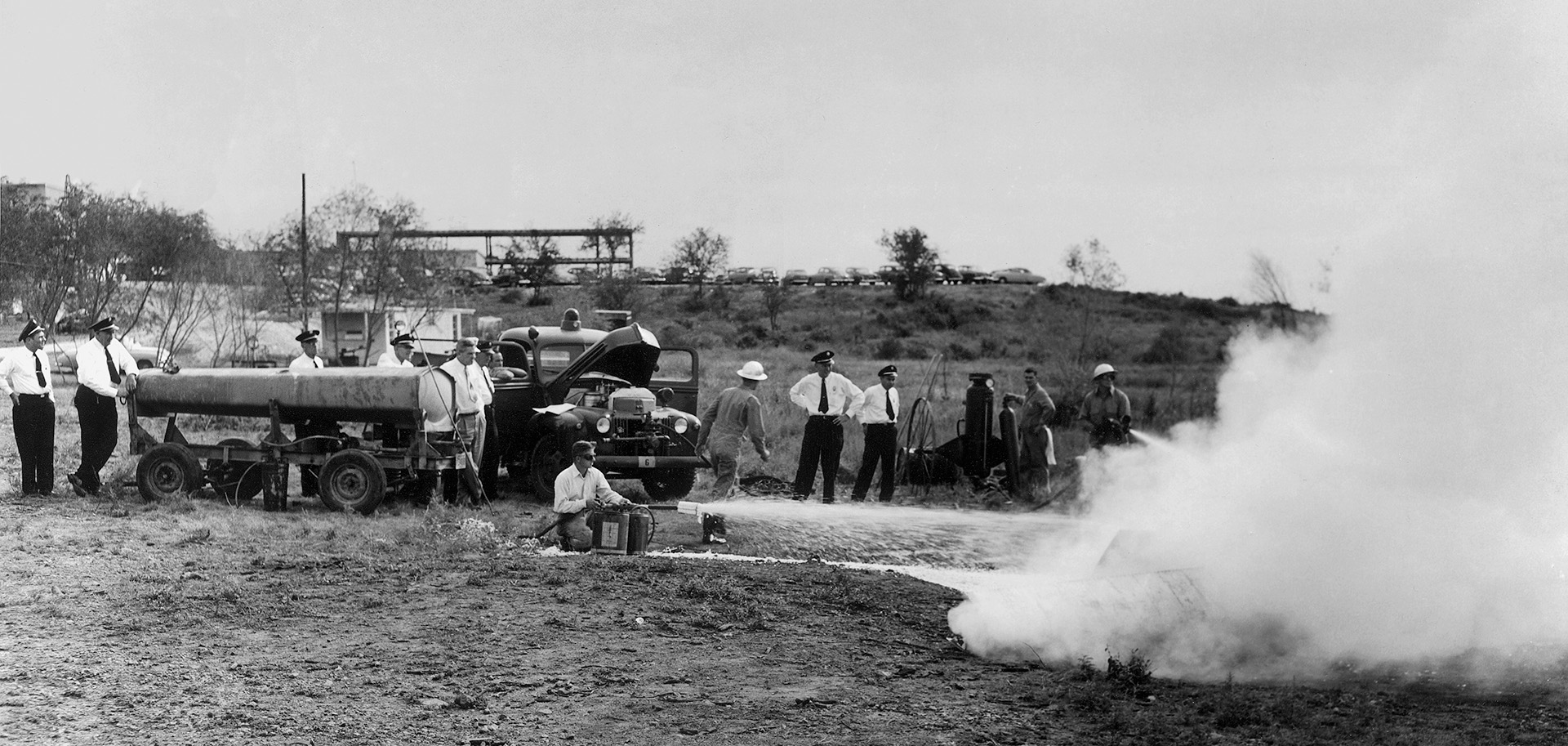
To combat fires involving aircraft and railroad cars made of magnesium alloys, SwRI’s fire technology engineers experimented with various combinations to find the best formula to use as an extinguishing agent.
Even with a flurry of technological advancements, including computer fire modeling, improved building materials and standardized testing methods, fire remains a threat to human life and property. With a shift toward new technologies and energy sources such as hydrogen, compressed natural gas and lithium-ion batteries, Southwest Research Institute’s advanced fire technology research is as relevant today as it was 75 years ago.

SwRI developed and built this fire extinguisher, designed to function in zero gravity, for the Apollo Moon missions. Engineers later modified the device for Skylab.
THE SPARK
In 1949, SwRI established a fire technology program, currently a department within the Chemistry and Chemical Engineering Division, in the interest of public welfare after a report showed a serious need for such services. At that time, more than 10,000 people died annually in fires, with property losses exceeding $700 million. No other industrial research institute had a focused fire research program, in a time before standards and regulations provided basic fire protections for the public.
SwRI’s first president, Harold Vagtborg, wrote, “In establishing the division, the trustees and staff of the Institute hope to contribute materially toward reducing the appalling loss of human life and suffering, and the property destruction caused by fire — a toll which continues to mount steadily year after year.”
Fire department chiefs, industry leaders and government officials from across the country signed on to help the efforts by serving on a board of counsellors for the new division. The newly formed program had several mandates. First, SwRI’s new fire technology program needed to advance the fundamental understanding of the chemical and physical aspects of fire, combustion and explosions.
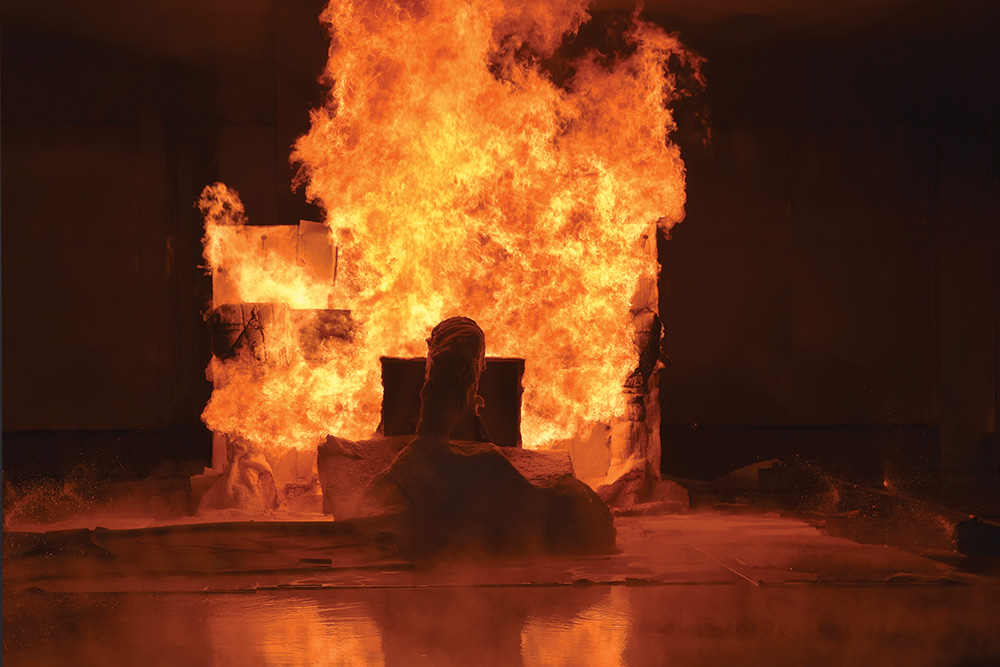
Using the only indoor jet fire test facility in the world, SwRI evaluates different passive fire protection systems, pipeline components and various building materials for their ability to maintain integrity in extreme fire conditions.
Based on this new knowledge, the team was charged with helping industry develop better firefighting equipment and chemical extinguishing agents as well as fire protection technology, to fireproof and create flame-resistant materials.
DETAIL
The National Fire Protection Association (NFPA) is a U.S.-based, international nonprofit organization devoted to eliminating death, injury, property and economic loss due to fire, electrical and related hazards. As of 2023, the NFPA cites 50,000 members and 9,000 volunteers working with the organization through its 250 technical committees.
SwRI provided fire technology services to industries with fire or explosion hazards as well as equipment manufacturers interested in developing more effective firefighting or fire-prevention equipment. Fire technologists sought to help manufacturers develop fireproof and fire-resistant materials for the consumer goods, transportation and construction industries.
The post-World War II era gave rise to new technologies and materials like alloys, plastics and other synthetic fabrics. One early project experimented with a variety of formulations to quickly combat fires involving magnesium alloys, used in the construction of railroad cars and aircraft. New materials all possessed unique fire characteristics that required evaluation.
SETTING STANDARDS

SwRI conducts fire detection and suppression studies in its large-scale warehouse sprinkler facility.
Fast forward 20 years to the 1970s, and fire deaths often still exceeded 6,000 per year. In 1973, the U.S. government released “America Burning,” a comprehensive report outlining the threat posed by fire in the U.S. with recommendations to improve public safety. The following year Congress established the U.S. Fire Administration to work with national fire service organizations like SwRI to develop comprehensive and actionable solutions to fire-related challenges.
The list of building codes, transportation material guidelines and product fire standards grew in the years that followed the report. New and standardized testing methods, along with the development of computer fire modeling, gave rise to more accurate measurements and improved understanding of fire behavior.
SwRI fire technology staff played a key role in standards development and continue to contribute, serving on technical committees to develop and revise a range of standards including ASTM and National Fire Protection Association codes. For instance, SwRI conducted the preliminary research behind the test setup and parameters for jet fire resistance testing. These ISO and Offshore Technology Institute standards qualify passive fire protection systems for tanks, pipes and other equipment associated with flammable liquid storage and transport. Fire technology specialists also contributed to intermediate-scale multistory building fire performance and generator standards and have published several SwRI test procedures.
DETAIL
SwRI Institute Engineer Dr. Marc Janssens was named a “DiNenno Prize Laureate” for his role in the widespread adoption of the cone calorimeter.
Cone calorimetry, jet fire, furnace and most recently pool or bonfire testing became the standard for evaluating materials, passive fire-protection products and hydrogen storage tanks, respectively. SwRI’s fire technology engineers use these techniques to evaluate and develop safer building materials, wire cable coatings, interior finish materials, furnishings and more. SwRI evaluates materials on a microgram scale all the way up to an entire room or warehouse scenario. High-bay facilities and a 1,600-acre remote site support fire research and testing for the road, rail, marine and air transportation industries.
For instance, SwRI is a leader in fire resistance and material flammability testing for compliance with the International Maritime Organization (IMO) Resolutions. SwRI is also recognized as an independent testing laboratory and quality assurance agency by the U.S. Coast Guard, Det Norske Veritas, Lloyd’s Register of Shipping, the American Bureau of Shipping, and other classification societies.
Today SwRI conducts more than 225 standard tests recognized by more than a dozen accreditation entities ranging from international, national, state and municipal agencies and organizations, such as ASTM International, the National Fire Protection Association, U.S. Department of Defense, CAL FIRE and the City of New York.
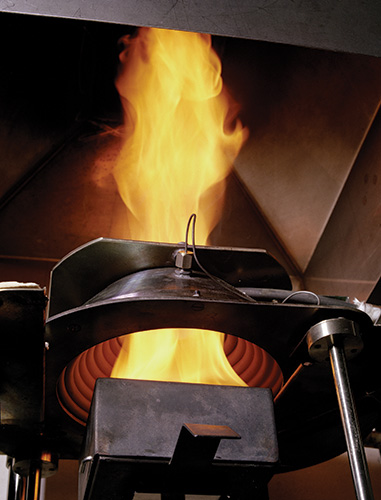
Cone calorimetry efficiently characterizes the heat release and material flammability of materials, burning sample coupons at laboratory scales. The device received the 2024 Philip J. DiNenno Prize for its lasting impact on fire safety.
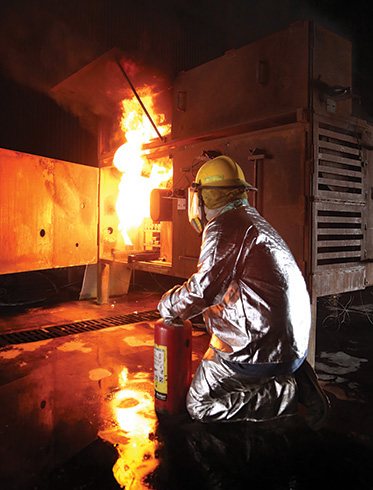
SwRI fire technology specialists worked with the Department of Transportation to improve the fire safety of motor coach class vehicles, developing tests to evaluate automated fire extinguishers for wheel wells and engine compartments.
FIRE TECHNOLOGY TODAY
Today, the Institute operates one of the world’s largest and oldest fire research facilities, with more than 50,000 square feet of offices, laboratories and high bays, offering standard, nonstandard and custom fire testing research and development to support government and industry clients. Engineers study fire dynamics, developing unique engineering and scientific resources for the resolution of fire and explosion safety issues, serving both government and commercial clients in the construction, transportation, chemical and petrochemical, nuclear, and telecommunications industries. High-quality and timely services evaluate and mitigate clients’ fire- and explosion-related hazards.
DETAIL
SwRI’s Fire Technology Department is ISO 9001:2015 registered by NSF International Strategic Registration Ltd. and accredited to ISO/IEC 17025 and 17020 by the International Accreditation Service Inc. Also, SwRI is a Nationally Recognized Testing Laboratory (NRTL) by the Occupational Safety and Health Administration (OSHA).
With this expertise, SwRI offers Listing, Labeling and Follow-Up Inspection Services to ensure that products, materials and assemblies meet specified requirements and performance. Inspectors select material samples from manufacturers, which are tracked and documented throughout the accredited testing process.
Then SwRI develops a follow-up procedure (FUP) document describing the product, production process and aspects that could change the quality and performance of the product. Visits to the manufacturing facilities verify the accuracy of the finalized FUP document, which authorizes the use of SwRI’s label and addition to SwRI’s Directory of Listed Products. Follow-up field plant inspections comply with the frequency recommended by the approving standard body.
Directories include products for the marine and construction industries, aboveground storage tanks for flammable liquids, fire extinguishing agents and systems, and other listed products.
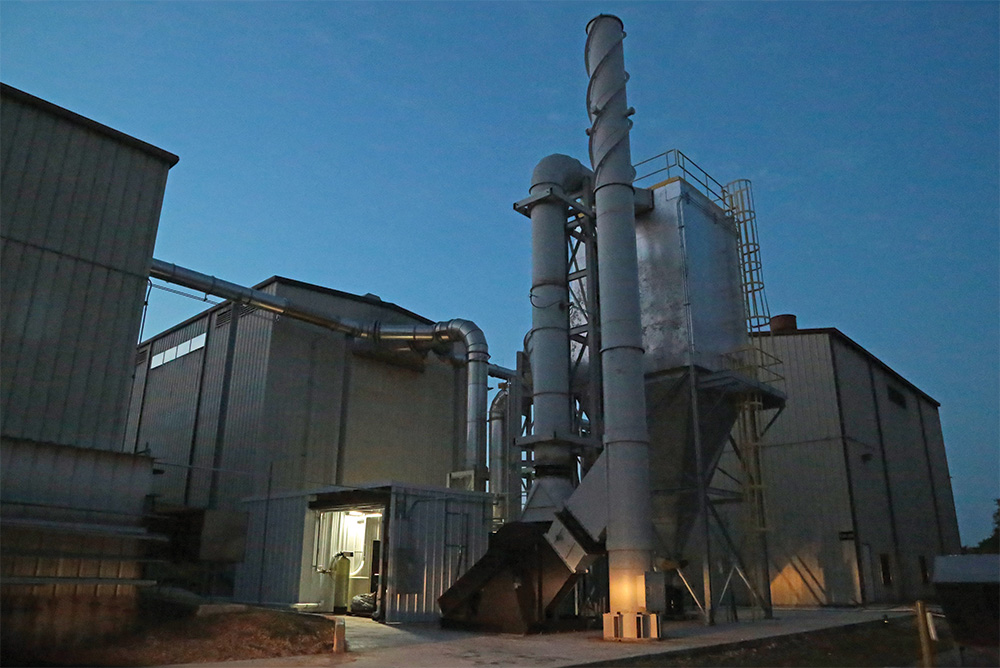
SwRI offers environmentally friendly fire testing and research, with all Fire Technology facilities connected to pollution abatement systems. SwRI now burns materials without releasing visible smoke or toxic gases into the environment.
TOMORROW’S TECHNOLOGIES

To verify resistance to fire and explosion, fire specialists expose fully charged electric vehicle batteries to gasoline pool fires to assure they meet safety standards.
Today, SwRI builds on its legacy as a pioneer in fire technology, applying its expertise in standardized testing to emerging technologies ranging from deep sea to deep space applications. The Institute’s multidisciplinary approach to research and development and fire tech staff’s decades of experience serve as a resource for government and industry clients. Not confined to one industry or market segment, fire technology research is critical for everything from spaceflight to offshore drilling.
As innovation advances, safety standards and testing techniques often lag. In those cases, SwRI develops customized approaches to evaluate the fire safety of new products. Our expert engineers help reduce the gap between innovation and safety by conducting unique, nonstandard fire tests that lay the groundwork for tomorrow’s standards.
In these scenarios, SwRI’s experienced fire research specialists consider what could happen and the potential ramifications if it does. Examining these conditions through the scientific process, our staff designs tests to identify and mitigate potential problems, helping government and commercial clients release safer materials, products and technologies.
DETAIL
Vehicle fire deaths reached 700 in 2022.
For instance, as battery electric vehicles become increasingly popular, the likelihood of overheating and catching fire increases if they are damaged or improperly used, charged or stored. The European ECE R100 test for rechargeable electric car batteries became mandatory in 2016. The standard requires exposing a fully charged electric vehicle battery to a gasoline pool fire. Using sensors, engineers measure temperatures up to 800°C during the two-minute pass or fail test. The battery must show enough fire resistance to allow a driver and passengers to escape in the event of fire.
Recently, SwRI engineers helped evaluate the performance of an enclosure system designed to contain a battery electric vehicle fire and prevent spreading. Engineers initiated thermal runaway, a chemical reaction that leads to an out-of-control fire, by exposing the battery to a heat source. The team monitored the ensuing fire from a safe location, capturing video footage while collecting corresponding temperature and air quality data. The interior wall peaked at nearly 2,000°F while the exterior wall remained relatively cooler at just over 350°F. The customized experiment provided the client with key data about their product’s effectiveness, where no standard exists.

From a 1,600-acre remote location, SwRI evaluates compressed hydrogen cylinders installed in vehicles to understand the explosion hazards. Engineers collect data in the infrared to characterize catastrophic failures.
With 40 million electric and hybrid vehicles on the road today, the potential for a fire involving vehicles with different fuel sources increases. As the push for alternative fuel sources to gasoline and diesel — including compressed natural gas and hydrogen — will add another layer of complexity to the question of fire safety on America’s roads.
COOL FACTOR
Conducting a full-scale fire test is an awe-inducing feat of engineering, requiring planning from purchasing materials to burn to experiment setup, cleanup and reporting. SwRI manages hundreds of fire tech projects each year and pollution abatement and wastewater collection systems added over the last 15 years minimize environmental effects.
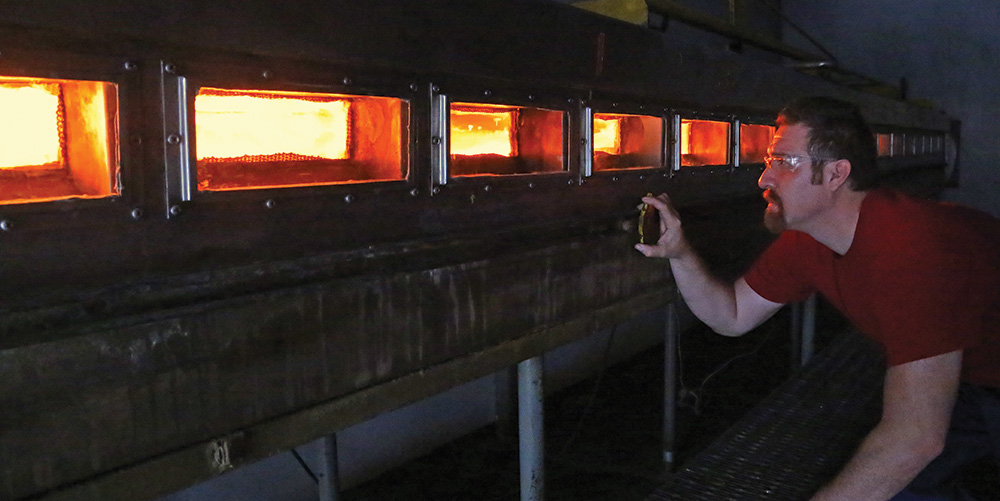
SwRI upgraded its Steiner fire testing tunnel with new pollution abatement technology as part of an extensive environmental upgrade.
Fire is fascinating. However, fire research is more than just cool — it’s essential for advancing public safety. Great strides have been made to reduce fire deaths and to improve fire safety over the last 75 years. However, in 2022 a staggering 3,790 deaths were still attributed to fire, and more than 13,250 people suffered fire-related injuries. As materials and technologies evolve, SwRI must advance fire testing methods. By helping to validate the safety of cuttingedge technology, the Fire Technology Department truly embodies SwRI’s mission of using science and technology for the betterment of humankind.
Questions about this story or Fire Research & Engineering? Contact Karen Carpenter at +1 210 522 3718
ABOUT THE AUTHOR
Karen Carpenter, P.E., started her Institute career in Fire Tech in 2003. She is now the department director, overseeing standard, nonstandard, and large- and small-scale fire performance evaluations.
